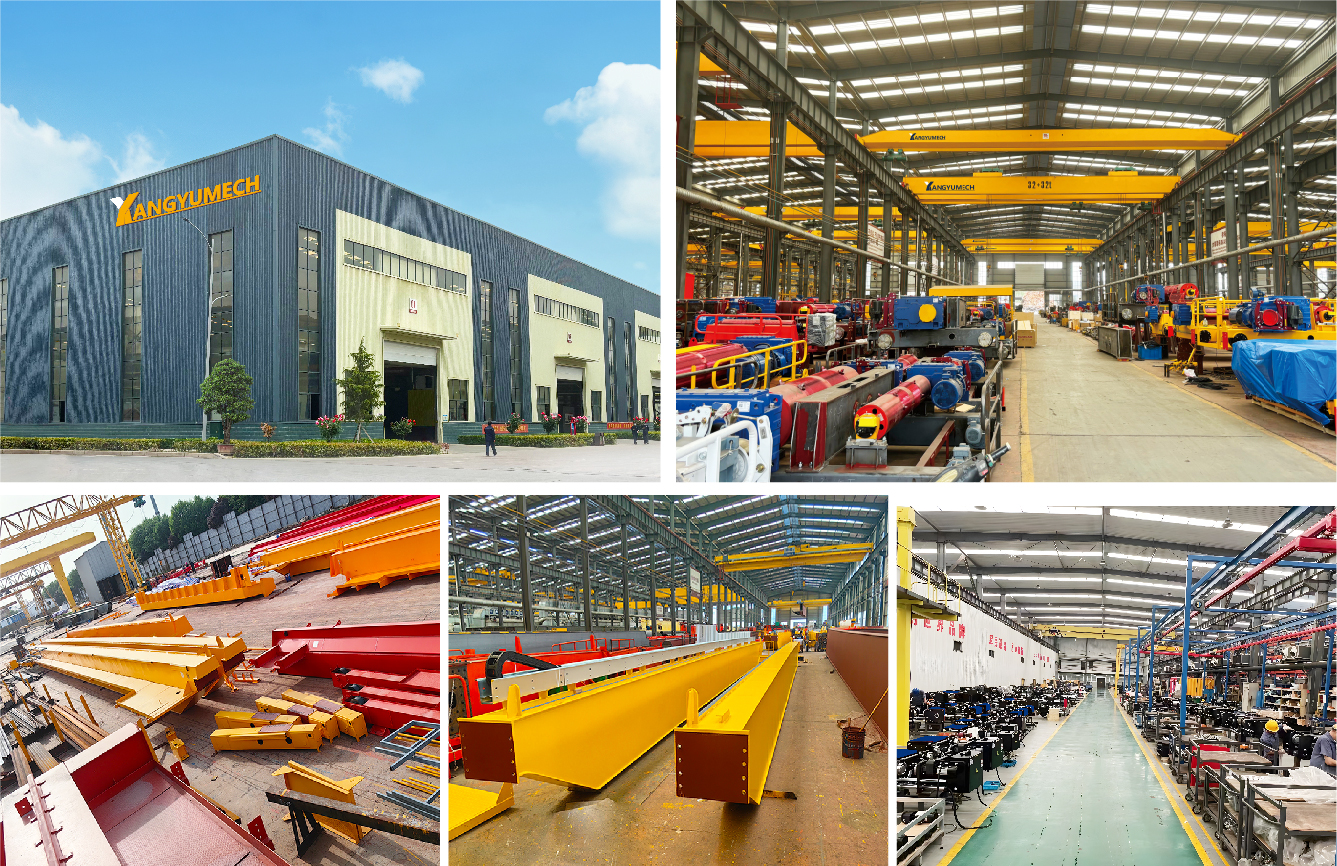The working level in the crane industry is a technical parameter used to measure the intensity of work of cranes and their components, mainly including the working level of the entire machine, the working level of the mechanism, and the classification of structural components or mechanical parts.
The working level of the entire crane is determined based on the use level and load state level of the crane. The use level of the crane reflects the frequency of its use during the entire design life and is divided into 10 levels from U0 to U9 according to the total number of working cycles; the load state level indicates the severity of its loading and is divided into four levels of light, medium, heavy, and extra heavy according to the nominal load spectrum coefficient. Based on these two factors, the working level of the entire crane is classified into 8 levels from A1 to A8.
The working level of the mechanism is used to design each mechanism of the crane and is also determined based on the use level and load state level. The use level of the mechanism is divided into 10 levels from T0 to T9 according to the total operating time; the load state level is divided into 4 range values according to the mechanism load spectrum coefficient. Based on these two factors, the working level of the mechanism, when classified as a separate entity, is divided into 8 levels from M1 to M8.
The classification of structural components or mechanical parts is mainly used for the design of steel structures and components and is determined based on the use level and stress state level. The use level of structural components is divided into 11 levels from B0 to B10 according to the total number of stress cycles; the use level of mechanical parts is divided into 9 levels from B0 to B8 according to the total use time. The stress state level is reflected by the stress spectrum coefficient. Based on these two factors, the working level of structural components or mechanical parts is classified into 8 levels from E1 to E8.

Different working levels of cranes are suitable for different scenarios:
Light level (A1 – A3): Rarely lifts the rated load, generally lifts slight loads, and is mostly used for installing and maintaining equipment in power stations or other workplaces, or in workshops and warehouses where the work is not frequently used.
Medium level (A4 – A5): Sometimes lifts the rated load, generally lifts medium loads, and can be used in heavily used workshops and garages, such as general mechanical processing and general assembly workshops.
Heavy level (A6 – A7): Regularly lifts the rated load, generally lifts heavier loads, and is suitable for heavily used workshops and warehouses, such as places where heavy items are frequently lifted for long periods or metallurgical workshops.
Extra heavy level (A8): Used for super-heavy lifting tasks, such as the lifting of large masts, huge engineering equipment, etc.
When choosing a crane, it is necessary to comprehensively consider the working level and other factors, such as the lifting capacity, working environment, site space, and expected working intensity, to ensure that the crane can complete the work tasks safely and efficiently. At the same time, the working level is also related to the safety factor, scrapping standard, etc. of the crane, and has important guiding significance for the design, manufacture, use, and maintenance of the crane.
Specific divisions of the crane working level may vary due to different standards and specifications, but the overall principle is similar. In practical applications, relevant standards and specifications should be followed to ensure the safe and reliable operation of the crane. If you need more detailed and accurate information, you can refer to crane design specifications or related professional materials.